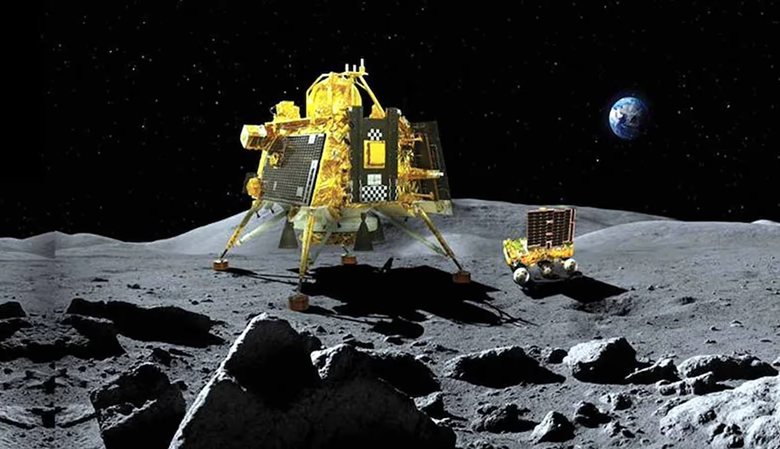Magma On The Moon? Chandrayaan-3 Data Reinforces Theory of Moon’s Ancient Magma Ocean

News Mania Desk/Agnibeena Ghosh/23rd August 2024
Recent findings from ISRO’s Chandrayaan-3 mission bolster the theory that the Moon’s surface was once covered by a vast magma ocean, according to an analysis published in the journal Nature. The study, conducted by researchers from the Physical Research Laboratory in Ahmedabad, focuses on data collected by Chandrayaan-3’s Pragyan rover, which explored a 100-meter track on the Moon’s surface.
The Pragyan rover, which was deployed by the Vikram lander that made a successful touchdown near the Moon’s south pole on August 23, 2023, has provided valuable insights into the composition of lunar soil. This analysis is significant because previous missions, including NASA’s Apollo program and the Soviet Union’s Luna missions, primarily gathered samples from the Moon’s equatorial and mid-latitude regions. In contrast, Chandrayaan-3’s data comes from the less-explored south pole, offering a new perspective on the Moon’s geological history.
The study revealed that the lunar soil at the south pole is predominantly composed of a single type of rock known as ferroan anorthosite (FAN). This composition mirrors that found in samples from other lunar regions, suggesting a uniformity that supports the magma ocean hypothesis. According to this theory, the Moon’s early history involved a molten state following its formation, which eventually cooled and solidified to form the current crust.
The magma ocean hypothesis proposes that the Moon was created from the debris of a collision between two protoplanets, with the larger body becoming Earth and the smaller one forming the Moon. This collision would have generated immense heat, melting the Moon’s mantle into a vast magma ocean. As the Moon gradually cooled, lighter materials like FAN floated to the surface, while denser minerals sank to form the mantle beneath the crust. This process explains why the Moon’s crust is predominantly made of FAN.
Despite the compelling evidence, the analysis also noted a potential challenge to the magma ocean hypothesis. The Pragyan rover’s detection of magnesium in the lunar soil could indicate deviations from the theory. Some recent studies have questioned the magma ocean hypothesis based on new analyses of samples from the Apollo missions. However, the uniformity of the soil composition across different regions and the geological context provided by the Chandrayaan-3 data continue to support the hypothesis.
The Alpha Particle X-ray Spectrometer (APXS) aboard the Pragyan rover played a crucial role in analyzing the lunar soil, providing detailed information about its elemental composition. This data, collected from the landing site named ‘Shiv Shakti Point,’ has offered fresh insights into the Moon’s geological past.
In summary, the findings from Chandrayaan-3 reinforce the idea that the Moon’s early history involved a magma ocean, contributing to our understanding of its formation and evolution. While alternative theories exist, the consistency of the data collected by the Pragyan rover supports the prevailing hypothesis about the Moon’s ancient molten state.






